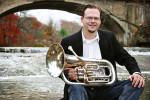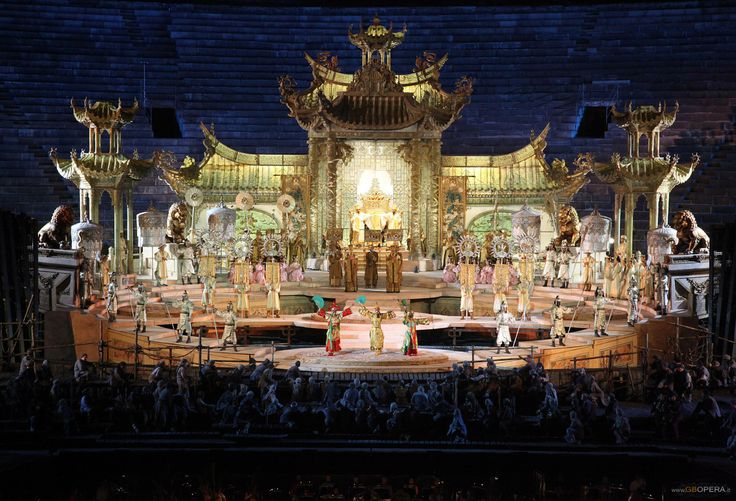 “Can’t respond right now, we are about to perform The Pearl Fishers”, or, “I’m at intermission of Turandot”. Night after night, the world’s greatest singers adorn the productions of the Metropolitan Opera, and in the pit, they are accompanied by their orchestral equals. Led by maestro Levine, the Met’s orchestra is among the most highly skilled and best paid in the world. Opera recordings, Symphonic outings, and recordings of their vaunted brass are not uncommon in the storied accomplishments of the orchestra. A true Met bass, trombonist Steve Norrell has been a stalwart in orchestra, proving his longevity and passion for music. Trained at Juilliard and by members of the Chicago Symphony Orchestra, Norrell has grown to embody his own musical voice and perspectives. An American original, he has recently returned to the recital stage with a world premiere of a sonata dedicated to his mentor, CSO bass trombonist Ed Kleinhammer. “Seven Positions” tm takes you to the opera. Enjoy!
“Can’t respond right now, we are about to perform The Pearl Fishers”, or, “I’m at intermission of Turandot”. Night after night, the world’s greatest singers adorn the productions of the Metropolitan Opera, and in the pit, they are accompanied by their orchestral equals. Led by maestro Levine, the Met’s orchestra is among the most highly skilled and best paid in the world. Opera recordings, Symphonic outings, and recordings of their vaunted brass are not uncommon in the storied accomplishments of the orchestra. A true Met bass, trombonist Steve Norrell has been a stalwart in orchestra, proving his longevity and passion for music. Trained at Juilliard and by members of the Chicago Symphony Orchestra, Norrell has grown to embody his own musical voice and perspectives. An American original, he has recently returned to the recital stage with a world premiere of a sonata dedicated to his mentor, CSO bass trombonist Ed Kleinhammer. “Seven Positions” tm takes you to the opera. Enjoy!
1. What is your connection with “The Chicago School” of playing brass instruments, and what were the main things you learned from it?
The summer after I graduated from high school, I attended the Brevard music Center and requested Charles Vernon as my instructor. Charlie was then in the Baltimore Symphony and was thought of at Brevard as the secondary instructor. Gerry Pagano (who I grew up with and is 5 days younger than me) had studied the previous summer with Charlie and improved substantially over one summer. Charlie likes to say that I was actually the first student at Brevard to request him as a teacher. That introduction obviously changed my life!
I’ve never been big on the concept of “schools” of playing or teaching. While attending Juilliard and taking professional orchestra auditions, people would often refer to me as a New York style player (because that’s where I was in school), which I did not agree with. Individuals are affected by exposure and it doesn’t necessarily have to be local. The way the Philharmonic articulates now is very different than the hard tongue in the time of Vacchiano, Chambers, Herman and Novotny. I’ve heard Joe Alessi say that the way they articulate now is different than what he did when he was in the Philadelphia Orchestra. The key is to be flexible enough to fit into any situation.
 When I came to Juilliard I didn’t know a lot of orchestral music. After buying budget recordings to learn repertoire, I realized that it was money poorly spent because if I didn’t like the playing, I wouldn’t listen to it. Even though the CSO recordings were never “budget,†it was a much better investment! My concept of sound is actually from Bud Herseth. Conceptually I think of this beautiful fundamental core, with rings around it. I don’t think anyone on trombone has ever achieved the presence of sound that Mr. Herseth did on trumpet, but that is the sound which is in my head. In those days the CSO would do to residencies at Carnegie each season and perform three different programs on each visit. Each year you could hear them play six different programs. On one program in the 70s they played Brahms 3rd and then Brahms 1st after the intermission. Mr. Herseth did not play the first half, but walked on stage during the intermission. A group of people began applauding just when he walked on stage. When Mr. Herseth played the first C on the downbeat, it was like Ah, he’s back! My definition of presence has always been the immediacy of the most beautiful core sound. It doesn’t have to be loud, it’s the quality and the immediacy.
When I came to Juilliard I didn’t know a lot of orchestral music. After buying budget recordings to learn repertoire, I realized that it was money poorly spent because if I didn’t like the playing, I wouldn’t listen to it. Even though the CSO recordings were never “budget,†it was a much better investment! My concept of sound is actually from Bud Herseth. Conceptually I think of this beautiful fundamental core, with rings around it. I don’t think anyone on trombone has ever achieved the presence of sound that Mr. Herseth did on trumpet, but that is the sound which is in my head. In those days the CSO would do to residencies at Carnegie each season and perform three different programs on each visit. Each year you could hear them play six different programs. On one program in the 70s they played Brahms 3rd and then Brahms 1st after the intermission. Mr. Herseth did not play the first half, but walked on stage during the intermission. A group of people began applauding just when he walked on stage. When Mr. Herseth played the first C on the downbeat, it was like Ah, he’s back! My definition of presence has always been the immediacy of the most beautiful core sound. It doesn’t have to be loud, it’s the quality and the immediacy.
While at Juilliard for four years, I had lessons with Mr. Kleinhammer on almost every CSO visit to NY. He was such an inspirational person and I’ll always have visual images in my mind of him coaching me. My Juilliard instructor, Don Harwood, grew up in Chicago studying with Mr. Kleinhammer. During the time that I was at Juilliard, Amtrak was reasonable and cheap to Baltimore and I would take the train and stay with Charlie (who then played in Baltimore) every other weekend. They all had similar concepts but their own way of saying it. Being exposed to all of them was a wonderful combination! They were all influenced by the CSO brass sound and after completing my first Met season, I attended my first Jacobs master class week at Northwestern. While there, I had two private lessons with Mr. Jacobs. Without a doubt I consider Mr. Jacobs to be the foremost authority on respiratory function and his insight is the reason for my Met longevity.
I’ve always disliked comparisons between orchestras. There are so many relative factors that it’s inevitably unfair. In the 1970s, the CSO brass section was unique in that there was a strong player on every chair. Other orchestras had great brass artists, but didn’t have the quality on every voice. The depth of great playing has increased so that almost every orchestra has that quality and because of the accessibility of recordings and broadcasts, styles are more uniform. Stefan Schulz once met me at the Met stage door after a performance of Wozzeck. Before he was in the Berlin Philharmonic he had heard numerous Met performances. He commented that “the Met orchestra plays more like a European orchestra than any other American orchestra.” After thinking about it for a while, I don’t think it’s a matter of European or American, it’s the exposure to the vocal style. European orchestras play much more opera compared to US orchestras. The Met orchestra is unique because of its exposure to the vocal style and I believe it is the reason why our young Met wind principals have had such success filling principal vacancies in major symphony orchestras.
2. What is your secret to a good legato?
My concept of legato is having the continuity of wind, an efficient embouchure and a fast and elastic slide arm. Many players work so hard trying to have a fast slide arm, but their wrist is rigid and they can only move their slide as fast as they move their whole arm. Obviously this is not smooth and is awkward to listen to. John Swallow’s trick was to put a tight rubber band around your outer slide which is parallel with the brace between the upper and lower slide. This is the same area where you normally hold your slide, but since your fingers are wedged between the brace and the rubber band, you can take your thumb off the slide which frees up your wrist. Adding this elasticity to your wrist is essential for legato and any relaxed fast slide movement.
John Swallow liked students to change partials if they did an interval larger than a 3rd. It’s a good rule to experiment with, but I believe the other part of the equation is the embouchure being efficient. In my early Met years, Pavarotti would go from one interval to the next immediately, without bumping the new frequency. I believe it’s the same on our instrument. There’s a fine line between having a good liquid legato, but not being stiff or rigid. Jay Friedman frequently tells students to play a “slow slur,” which is what I interpret as Jay trying to get the student to blow through the legato. I’ll often ask the student to have a quicker and more efficient embouchure without bumping the notes. I think that Jay and I are approaching the same thing from different sides of the equation. I encourage students to buzz legato phrases only using their tongue on the initial attack after a breath. After that, the clarity should come from the efficiency of the embouchure. It has to be trained! Even with students who prefer to use legato tongue, I encourage them to buzz the mouthpiece only using the tongue on the initial attack. If their embouchure becomes more efficient, whatever amount of legato tongue they were using inevitably becomes less.
The stimulus that I use when I play legato is thinking that it’s smooth. Personally I try to have the tongue out of the way as much as possible, but when I’m playing, being smooth is primary and anything else that I’m doing to achieve this is a trained reaction and secondary.
My two favorite legatos that I’ve personally encountered are Charlie Vernon’s and Norman Boulder’s. It’s not a coincidence that Jay Friedman studied with Swallow before he got into the CSO or that Norman studied with Swallow in school or that Charlie commuted to NYC while in Baltimore to study with Swallow.
3. How did the piece you have premiered, which is dedicated to Ed Kleinhammer, come about? What does it mean to you musically and personally?
After Mr. Kleinhammer passed away in 2012, Alan Carr, who was studying at the University of Wisconsin at that time, coordinated this commission. John Stevens is the tuba instructor at Wisconsin as well as on the composition faculty and Alan sent out a proposal to many prominent players. Mr. Kleinhammer might have played the second movement which quotes Mahler, but he probably wouldn’t have been interested in playing the rest of the work, although I think he would’ve liked the piece.
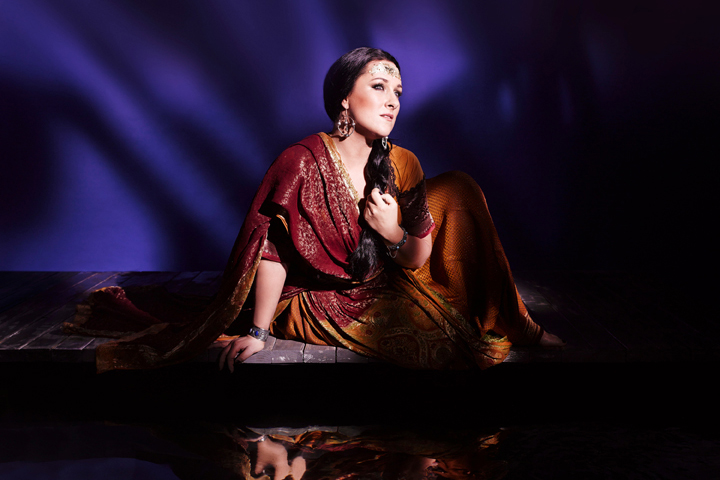 Mr. Kleinhammer had an infectious enthusiasm and when he, Jeff Reynolds and myself judged a bass trombone competition at the 1994 ITF in Minneapolis, the first words out of his mouth when he saw me were that he had “retired too soon” (…after only 45 years in the CSO). He loved music and when our paths crossed he would tell me about Met broadcasts he had heard that he knew I had played on. I know that he experimented with composition (unfortunately I never heard any of his pieces, but he talked to me about them) and even if a piece did showcase his strengths, I’m confident he still had the capacity to like a work or find it interesting. I had a student attend the Ithaca ITF and I called him during his time there to ask if he was enjoying the workshop. Well he was having a lesson at that time with Mr. Kleinhammer. When the phone rang, Mr. Kleinhammer asked my student who was calling? When the student replied that my name showed in the caller ID, Mr. Kleinhammer replied that he should answer because he wanted to talk to me.
Mr. Kleinhammer had an infectious enthusiasm and when he, Jeff Reynolds and myself judged a bass trombone competition at the 1994 ITF in Minneapolis, the first words out of his mouth when he saw me were that he had “retired too soon” (…after only 45 years in the CSO). He loved music and when our paths crossed he would tell me about Met broadcasts he had heard that he knew I had played on. I know that he experimented with composition (unfortunately I never heard any of his pieces, but he talked to me about them) and even if a piece did showcase his strengths, I’m confident he still had the capacity to like a work or find it interesting. I had a student attend the Ithaca ITF and I called him during his time there to ask if he was enjoying the workshop. Well he was having a lesson at that time with Mr. Kleinhammer. When the phone rang, Mr. Kleinhammer asked my student who was calling? When the student replied that my name showed in the caller ID, Mr. Kleinhammer replied that he should answer because he wanted to talk to me.
I didn’t get to study with him as much is so many other people, but he was always so giving, supportive and encouraging! I was so very fortunate to have these opportunities with these icons!
4. How would you describe the roles and the relationship between the tuba and the bass trombone in an orchestra? In your view, does any other pair of winds have a similar relationship?
Often times I believe that the bass trombone should be the clarity in the middle of the tuba sound. I worked alongside Herb Wekselblatt my first 15 years at the Met and Herb only played a B-flat tuba. Playing next to Herb was one of the great joys of my life. He was unbelievably talented and natural, although he was uncomfortable when we started doing Carnegie concerts in 1991 because he wasn’t familiar with the symphonic repertoire, having played more opera. Our orchestra was very busy recording during this time and I spent a lot of time listening to recordings on blending of our sounds..
For bass trombone and tuba as a team, I believe it’s important for the bass trombone to complement the tuba sound. On an excerpt like Fountains, when the tuba is going down to their low Es, the bass trombone should not be any louder (even though the composer raises the dynamic), then the tuba can be audible with their best sound in the hall. If the bass trombone’s too loud, you just lose the low octave and the effect is different. There are so many examples like this. The group’s sound should always be strived for. The same could be said between the celli and basses or any of Wagner’s wind orchestrations in the Ring. All of Wagner’s Ring groups are scored in quartets except for the solo tuba voice.(3 Flutes & piccolo. 3 oboes & English Horn, etc,) In order to maintain the transparency, balance is imperative. Principal melodic idea should always speak immediately and be audible to the listener’s ear first or it’s musically confusing.
5. What are your favorite solo pieces, which have been recorded, for bass trombone?
Unfortunately, I’m a bit of a dinosaur with the solo bass trombone repertoire. My recent Manhattan School of Music recital was my first at the school in 23 years. In 1994, I suffered nerve damage in my right shoulder in the process of having a rotator cuff repaired and that sidetracked my solo appearances for a long time. Extending my arm has been problematic since and certain passages I was not comfortable doing. It will always be weak because of the nerve entrapment, but I’m now working with a private Pilates instructor who has helped me be able to recognize the muscle that should be firing and gradually I’m relearning everything. It’s substantially better than any time since my 94 surgical procedure (range of motion is much better), so I’m optimistic that I will be more active!
The Stevens was the first consortium that I was part of, but since then some members of that group have organized funding to commission other pieces for our instrument by composers who they were interested in. Interesting concept and I’m glad to be a participant!
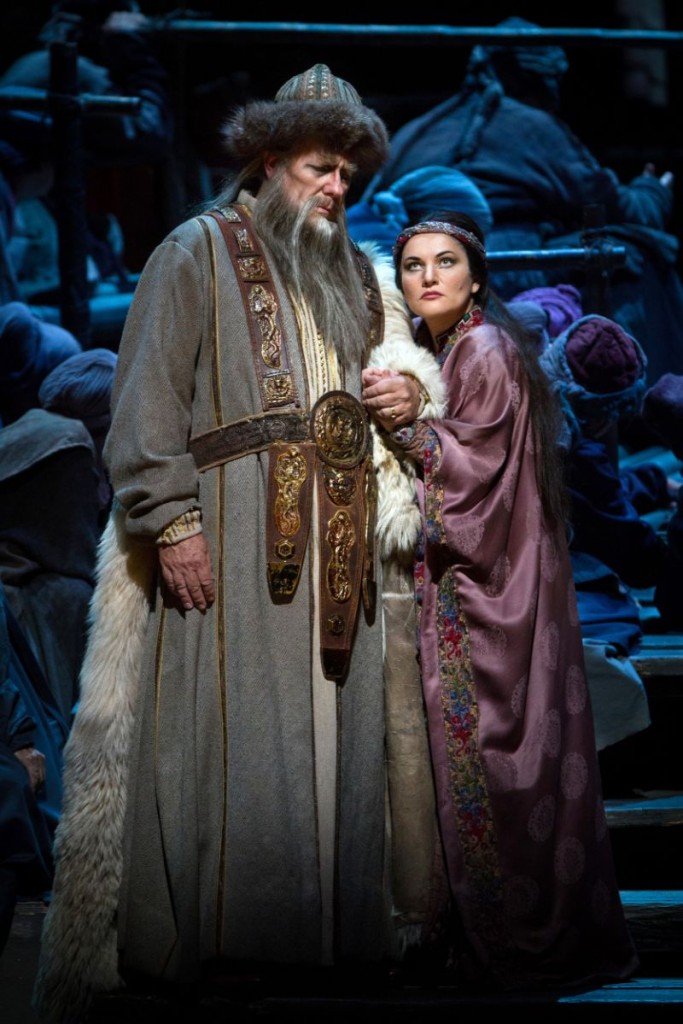
6. How would you describe your pedagogy? What have you adopted from others and what have you developed on your own?
I would say that I’m a combination of so much good fortune! My mother moved to Athens Georgia when I was going into ninth grade and I began studying with Phil Jameson, who I consider the finest teacher in that advanced developmental stage of trombone playing that I’ve ever encountered. Dr. Jameson’s students all had good facility and were good sight readers because of the repertoire we were forced to play. The music program in Athens at that time was unbelievable, as was the level of young high school trombonists who were studying with Dr. Jameson. I’ve encountered other people who felt that their young trombone environment was special, but it’s hard for me to imagine any place being better than my experience at that time. Gerry Pagano and I were one year behind Carter Stanfield, who was the big trombone star. Everyone got along and realized very early that competition is within oneself. On weekends, we would play ensembles for hours with occasional breaks for basketball. As a quartet, we played the Bozza in the 11th grade and didn’t even know that it was difficult.
During the winter of 1972, several of us went up to a workshop with Lewis Van Haney at Western Carolina University. It was advertised as a weekend trombone choir for college and top high school students. Carter and I were the two top students there (Gerry didn’t attend because he had gotten a C during a marking period). Carter played first and Mr. Van Haney lent me his bass trombone to play the bottom voice. What a great experience! About a year later Mr. Van Haney picked out a TR180 and had it sent to me from the Holton factory. During my senior year, Mr Van Haney actually did a master class at my high school and it was only years later that I came to the realization that it had been a recruiting visit. Quite honestly, I was not a good enough student at that time to have handled IU and was much better suited to the Juilliard curriculum of that time. Even though I didn’t go to IU, Mr. Van Haney was always such a positive influence on me. I saw him do the same master class on four different occasions, and hearing how he treated every colleague on an outside job as if they were one of his Philharmonic coworkers made such a lasting impression on me. He was a man of the generation that seems to have had the highest level of civility.
Besides the day that I met my wife Karen, meeting Charlie Vernon in the summer of 1974 probably had the greatest effect on the outcome of my life. Until he became a member of the CSO, I was fortunate enough to always get to spend time with him. Don Harwood was incredibly thorough with his preparation throughout all the time I was at Juilliard and I was fortunate enough to be in the Tanglewood fellowship the summer of Norman Boulder’s first BSO season at Tanglewood. One of the greatest assets for a young musician is getting an opportunity to play with s many great players as possible. I was very fortunate and was always trying to learn.
In my first lesson with Arnold Jacobs, he pointed out how my tongue was in the way of my wind flow in the articulation. He would take the same equipment and from the moment the sound started, the wind flow was at max. Mine would be tongue, and then once the tongue got out of the way the wind flow would appear. He told me that I was overly dependent upon my tongue, but wanted me to figure out for myself how to establish my own new good habit. Trying to make this better was like searching for the Holy Grail. After several years it got much better and I actually evolved out of being James Levine’s whipping boy. There was a time when there could be an orchestral train wreck and the first words out of Jimmy’s mouth would be, “we need cleaner articulation from the low trombone.” Over time, I believe my immediacy has become an asset. Most students who ever studied with me will say that I’m obsessive about the clarity of sound and the clarity of articulation. Mr. Jacobs would always say that my instrument was a large bore tenor and I believe my greatest assets are sound and clarity.
7. Who are your inspirations? Non-musical?
My inspiration has always been the support and love of my family. Over the years, I’ve encountered students who lacked this same type of family support and I was always cognizant of how fortunate I was. I didn’t have much financial backing (although college was very inexpensive then compared to today), but I always felt that them behind me, no matter how big the challenge or hurdle. This support has also been the sustaining influence in overcoming my recent physical challenges.
Musical?
I’ve been so fortunate in meeting so many people that it would be impossible to name them all. Obviously some are in the arts, but we encounter unique special people almost every day in our lives. I think that you have to cherish the good and try not to worry too much about the ones which you do not like!
8. How would you contrast the “New York School” of trombone playing of Joe Alessi with what you learned in Chicago?
Joe Alessi is such a unique person. He is one of the hardest working individuals I’ve ever known! The progress that he’s made since he became principal trombone of the Philharmonic is monumental and he’s always looking for ways to incorporate new things into what he does. During Joe’s early years, we had a weekly racquetball game and would occasionally play together. Simply tremendous! Since those years, certain aspects of his playing have improved exponentially. Playing a job like the Met, I was always envious of the freedom and flexibility that Joe had in doing outside projects. Of course I’m happy for Joe and it’s hard to imagine anyone being more productive while they were doing it.
Joe is a little younger than I am, but he was at Curtis while I was at Juilliard and all of us of that era were positively affected by the CSO. Joe’s greatest influences were his father, teachers in the Bay Area (Ned Meredith and Mark Lawrence) and then Dee Stewart and especially Glenn Dodson at Curtis. Many years ago I had conversations with Joe about my lessons with Mr. Jacobs. He was interested, but his concepts are uniquely his own on certain things. He’s been very successful in developing so many amazing artists, In 1988, the CSO was doing a residency at Carnegie and their off day that week was on Thursday. Charlie and Jay came up to the house in the afternoon as did Joe and David Finlayson. We played for hours (while I had the tape recorder on). Listening to the tape I hear individuals. It’s all really, really good, but unique to the person who was playing it. Since that time, Joe’s playing has only grown!
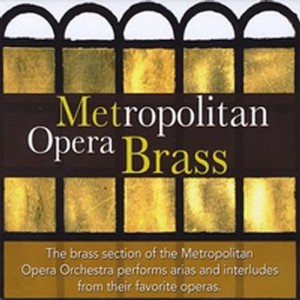
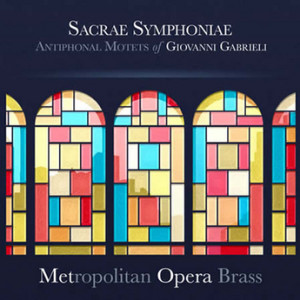
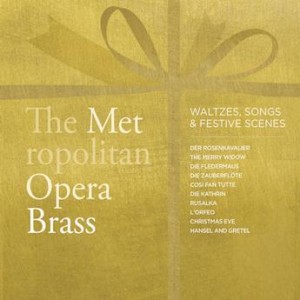 9. What have been your chamber music experiences, and what do you recommend for young players?Students of today do not play enough chamber music! I encourage all of my students to purchase as many duets as they can and if it’s out of print, find a copy. I tell my bass trombone students that I prefer them playing duets with the same instrument. Not that I have anything against playing duets with a tenor trombone, but ideally it’s best for both students if they both get an opportunity to play lead and accompaniment. When Mr. Jacobs referred to Mr. Herseth, he referred to him as a “storyteller.” While at Juilliard, I played Telemann canonic duets with a really descriptive bassoon player. It was really interesting playing these duets with another instrument that doesn’t have the same instrumental challenges that ours does and trying to put the music above anything else.
9. What have been your chamber music experiences, and what do you recommend for young players?Students of today do not play enough chamber music! I encourage all of my students to purchase as many duets as they can and if it’s out of print, find a copy. I tell my bass trombone students that I prefer them playing duets with the same instrument. Not that I have anything against playing duets with a tenor trombone, but ideally it’s best for both students if they both get an opportunity to play lead and accompaniment. When Mr. Jacobs referred to Mr. Herseth, he referred to him as a “storyteller.” While at Juilliard, I played Telemann canonic duets with a really descriptive bassoon player. It was really interesting playing these duets with another instrument that doesn’t have the same instrumental challenges that ours does and trying to put the music above anything else.
There is no substitute for young players developing the ability to play and listen at the same time. Some people of my generation say that I was lucky to have gotten the opportunities that I did (true), but the most important thing was that when I got these opportunities, I went in and made a good impression. In a repertoire orchestra, it’s really obvious if someone is not listening. I was successful because of all the chamber music I played!
c. 2016 David William Brubeck All Rights Reserved. www.davidbrubeck.com
Interested in more “Seven Positions†tm Interviews?
Charlie VernonJames MarkeyChris BrubeckDoug YeoJeremy MorrowTom EverettGerry Pagano Ben van DijkRandall HawesDenson Paul PollardThomas MattaFred Sturm Bill ReichenbachMassimo Pirone Erik Van Lier Jennifer WhartonMatyas VeerStefan Schulz

